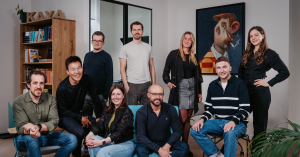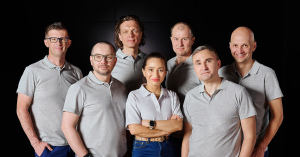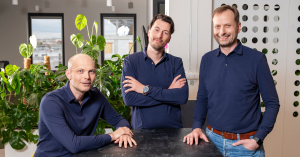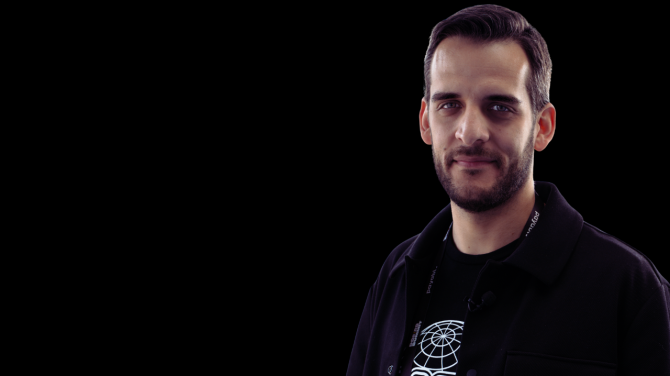Economic uncertainty and the war in Ukraine are only some of the reasons that made 2022 quite a turbulent year for startups. Although the amount of capital invested last year saw a decline compared to the record-breaking 2021, there are still many early-stage companies with high-growth ambitions, looking for funding.
To address this gap, investment platforms have emerged as a popular option, modernizing the traditional wealth management industry and helping the local ecosystems of entrepreneurs. One such platform, SeedBlink, has been leading the way in Europe, with €60 million invested in more than 260 startups since its launch in 2020. To gain deeper insights into SeedBlink‘s latest developments and future plans, we spoke with Carmen Sebe, the CEO of the company.
Carmen discussed how the company’s new tools are benefiting both startups and investors, stating that they are making it easier for startups to raise capital and allowing investors to diversify their portfolios across a range of promising ventures. She also revealed how SeedBlink is positioning itself to take advantage of emerging opportunities in the startup ecosystem, including expanding its reach across Europe and investing in more diverse sectors. Carmen shared her perspective on how SeedBlink is adapting to the current economic environment, explaining how the company is working to mitigate risks for investors and startups alike.
The Recursive: Startup investing has been growing in popularity in recent years. What’s the status quo of the sector? How does the economic situation affect it?
Carmen Sebe, CEO of SeedBlink: Since 2020, startup investments and access to capital for early-stage enterprises have been two hot topics in the startup world. After the boom of investments and valuations, for the past 9 to 12 months we’re observing a decline in the number of deals and valuations due to the uncertain economic times across the globe.
One of the trends we see at SeedBlink is that many startups are joining our platform to raise a bridge round to help them develop their ideas further without having liquidity issues. For companies that already have developed a product and built a base of paying clients, we’re seeing a decrease in their run rates.
In 2022, SeedBlink expanded to new markets and got licensed under the European crowdfunding regulation. What was the impact of these developments on SeedBlink? Where is the company at the beginning of 2023?
Carmen Sebe: The licensing we received played a huge role in the development of SeedBlink. Being certified under the European crowdfunding regulations is an official confirmation of our trustworthiness and that we respect the best practices for fostering a fair investment ecosystem, helping both investors and founders. As we embarked on international expansion, and also being licensed under ECSPR, allowed us to increase the volume of cross-border capital invested by 50%. Compared to the same period in 2022, we managed to increase the total number of investors on SeedBlink 3-fold.
Amidst the current economic crisis, SeedBlink is still on a positive growth trajectory, as we managed to improve the amounts invested through the platform by over 10% in the first quarter of 2023, compared to Q4 of 2022.
One of the new additions to the company’s portfolio is the SeedBlink Trust GmbH. What are the most significant benefits for investors and startups from using the new entity?
Carmen Sebe: With the introduction of SeedBlink Trust GmbH, we’re following our goal to become one of the leading European co-investment platforms. This allows for easier and friendlier management of equity investment projects, focusing on primaries, follow-ons and secondaries. To achieve this, we built an infrastructure to sustain the internationalization of our platform and comply with the regulatory requirements. We decided to transform our business model and transition from a Romanian SPV to an international GmbH.
SeedBlink Trust GmbH is our company registered in Austria. With the new entity, we make the investment process easier. Previously, there were a minimum of 6 steps to be completed for an investment, and we reduced it to only 3. Providing a shorter closing time of a funding round is another benefit for startups, as we are going to reduce it to 3-4 weeks.
With the SeedBlink Trust, we’re also safeguarding the confidentiality of our investors. By using the new entity, their data won’t be publicly available to the others involved in the deal.
Dedicated to democratizing access to investment, SeedBlink recently launched its digital secondary market solution. Can you share more about it?
Carmen Sebe: One of the most unique aspects of investing in startups is its long-term nature. Once you invest in a private company, you’re committed to it for a while. Startups are considered “illiquid assets”, meaning they can’t be easily bought or sold until an “exit” opportunity comes along (IPO or acquisition). This being said liquidity was the most sought-after feature for individual investors. Since the introduction of the solution a month ago, there were over 150 offers made for 72 batches of stocks from buyers. The total value of batches listed so far exceeds €1M.
SeedBlink Secondary Market allows our users to sell the shares they now possess from their SeedBlink portfolio and further diversify or invest in high-performing companies. If you’d like to learn about the process, basically investors can choose a business where they have assets, specify their offer (including the number of shares to be sold and the price per share), and publish it. The offer will be made public to verified potential buyers after first being made known to the investors who supported the same company as the seller. That’s when the seller starts receiving offers from potential buyers. Once an offer is received and analyzed, it must be accepted, rejected, or countered with an offer until a desirable agreement is achieved.
We strive to improve it with the feedback of our users and offer more possibilities for them to access early liquidity. On our roadmap, we have included adding non-equity transactions and offering investors access to analytics and insights from their portfolios.
Can you share more about the benefits for buyers and startups?
Carmen Sebe: One of the biggest benefits for buyers on the SeedBlink Secondary Market is the possibility to invest in a promising company at a later stage. If a buyer has missed the opportunity to invest in a startup during the initial offering, now he can secure equity and support the growth of the company. By using the solution, buyers might also be able to get a better price per share on their investment.
What’s interesting is that new investors can join and become buyers of shares. If in the primaries the starting ticket was 2,500 euros, in the secondaries there is no threshold, meaning you can buy shares of 100 euros value if you’d like and meet the common ground with a seller.
Companies can learn how investors perceive their company through the secondary market, but they are not subject to the uncertainty of a decreased valuation or an increased administrative cost.
It serves as a means of reviving their investor base, paving the way for new infusions of capital, and attracting new brand advocates. A robust secondary market might show how strong and well-liked their business is, which will make it simpler to get more funding.
What’s to come for SeedBlink in the next few months in terms of goals and potential market expansion?
Carmen Sebe: We’re planning to continue our international expansion in 2023. The two main markets we’re aiming at are DACH and the Baltics. We’re already testing our solutions there. By entering these new markets, we’d be able to make startup investing easier for everyone in Europe.
Actually, these days we are present in Barcelona at EU-Startups Summit. Besides being a speaker next to the founders of Crowdcube and Seedrs, we’re soft launching a new product.
From all our experience with SeedBlink, we realized that equity is the lifeblood of any successful business and that managing it effectively is critical to achieving long-term success and long-term investments. But it’s poorly understood or managed by startups & scalps, hurting them in the mid-long term.
Basically, we’re working on an Equity Management and Financing Infrastructure for European SME companies and their stakeholders, enabling them to organize and trade equity easier and in a compliant way. Our platform is designed to help founders, individual investors, and stock option plan owners (employees) manage their equity ownership with ease, in an easy-to-understand way. This is something exciting that you’ll hear more about in the close future.







